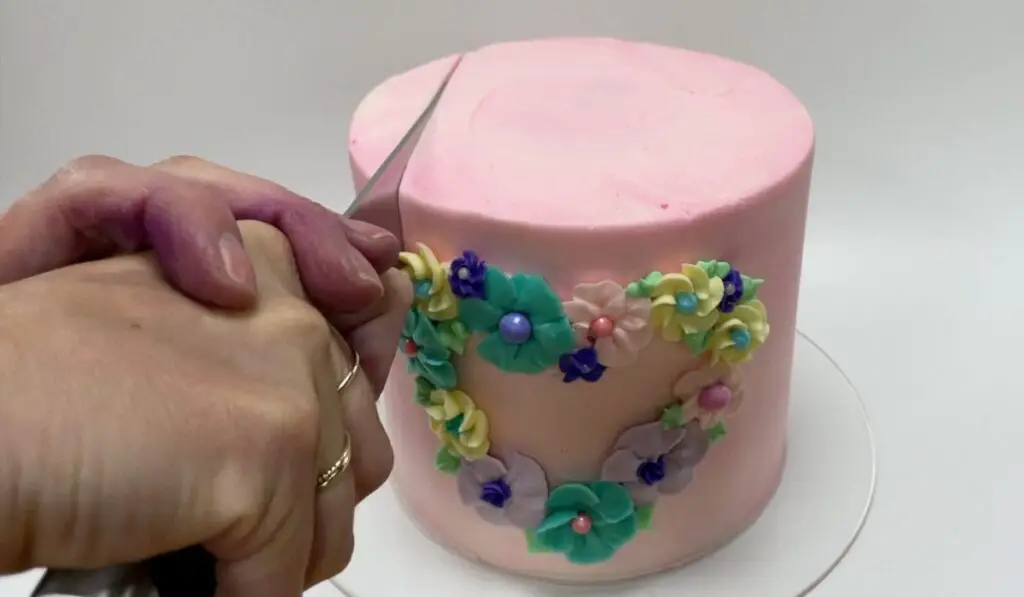Introduction
Cake cutting is more than just slicing through layers of deliciousness; it’s an art that ensures everyone gets a fair share of the sweet treat. Whether it’s a celebration, a wedding, or a simple gathering, mastering the art of cake cutting is essential for ensuring an enjoyable experience for all.
In this guide, we’ll delve into the techniques, etiquette, and considerations for cutting a cake. From understanding different methods to the significance of equal portions, this comprehensive overview will equip you with the knowledge to slice and serve cake like a pro.
Understanding Cake Cutting Techniques and Basics
1. The Importance of Technique
- Exploring the significance of the right cutting method.
- Why technique matters in maintaining the structural integrity of the cake.
2. Popular Cake Cutting Methods
- Overview of classic cake cutting techniques (e.g., radial, grid, etc.).
- Step-by-step guides for each method with illustrations.
3. Factors Affecting Cake Cutting
- How cake size, shape, and texture influence the cutting process.
- Tips for cutting different types of cakes (e.g., layered, fondant-covered, etc.).
4. Etiquette and Considerations
- Understanding cultural and social etiquettes related to cake cutting.
- Considerations for dietary restrictions and accommodating diverse preferences.
5. Tools of the Trade
- Essential tools for precise cake cutting.
- Alternative methods for cutting without traditional tools.
6. Tips for Serving
- Best practices for presenting and serving cake slices elegantly.
- Maintaining hygiene while serving.
7. Challenges and Troubleshooting
- Addressing common issues encountered during cake cutting.
- Troubleshooting tips for uneven slices or difficult-to-cut cakes.
8. Innovations in Cake Cutting
- Exploring modern techniques or gadgets that simplify cake cutting.
- Unique and creative approaches to slicing and serving cakes.
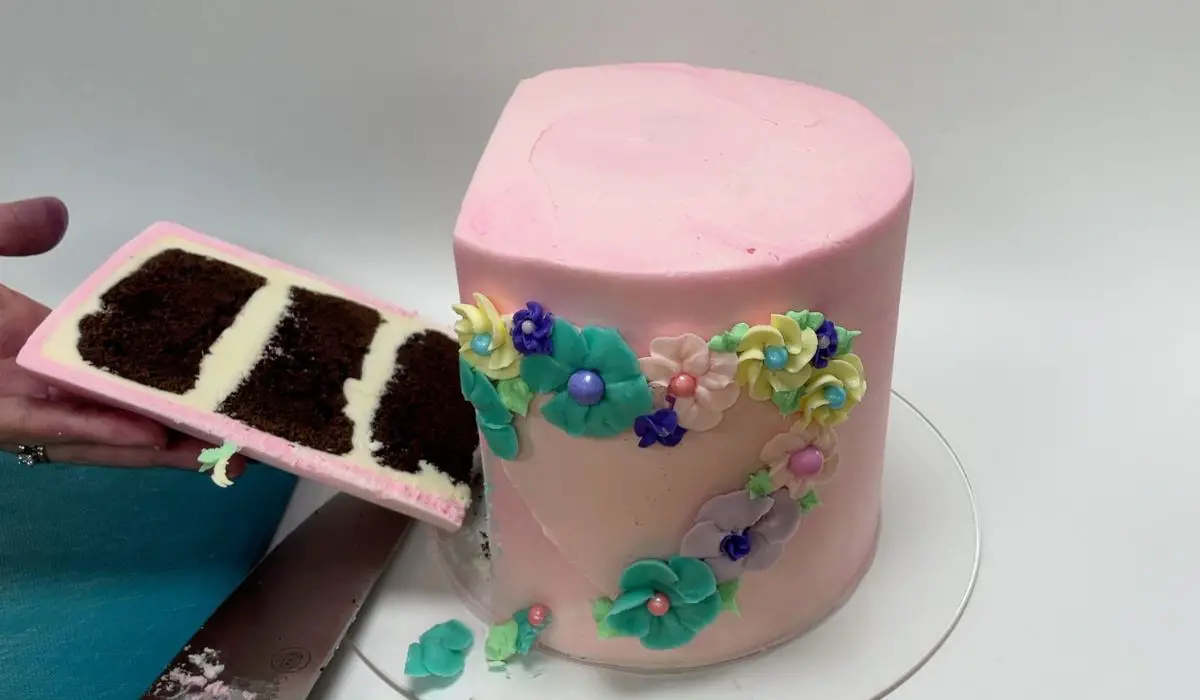
Equal Distribution:
- Fairness: Proper techniques ensure fairness in serving. When cutting a cake, especially during events, ensuring everyone gets an equal portion is a gesture of equality and inclusivity.
Presentation and Aesthetics:
- Visual Appeal: A well-cut cake enhances its visual appeal. Properly sliced pieces present the dessert attractively, adding to the overall aesthetic of the event.
Structural Integrity:
- Preserving Quality: Different cake textures require specific cutting methods to maintain their structure and prevent crumbling. Techniques like using a warm knife for layered cakes help retain their integrity.
Etiquette and Tradition:
- Cultural Significance: Cake cutting often carries cultural or traditional significance, and knowing the correct method respects these customs. For instance, weddings have specific protocols for cake cutting.
Practicality and Efficiency:
- Serving Efficiency: Knowing efficient cutting methods saves time and effort during large gatherings. It ensures smoother service, reducing chaos and allowing guests to enjoy the cake promptly.
Personal Touch:
- Skill and Finesse: Mastering cake cutting techniques reflects skill and finesse, adding a personal touch to the celebratory moment. It’s an opportunity to showcase craftsmanship and attention to detail.
Accommodating Preferences:
- Catering to Needs: Different techniques accommodate dietary preferences or restrictions, ensuring everyone can enjoy the cake according to their requirements.
Overall Experience:
- Enhancing Celebration: The act of cutting and serving a cake is a shared experience that marks joyous occasions. Knowing the right technique adds to the celebratory atmosphere and leaves a lasting impression.
In essence, mastering cake cutting techniques goes beyond the act itself. It’s about creating a memorable and enjoyable experience for everyone involved in the celebration. From fairness in distribution to the visual appeal and cultural significance, understanding these methods elevates the joy of sharing and savoring a delicious cake.

Traditional Cake Cutting Methods
Slicing Method
The slicing method involves cutting parallel lines across the width or length of the cake, creating uniform slices. Start by cutting from one end to the other, ensuring equal-sized pieces. It’s ideal for round or square cakes and works well with most cake types, maintaining structural integrity. This method is simple, effective, and suitable for various occasions, ensuring fair portions for all guests.
Wilton’s Cake Cutting Guide
Wilton, a renowned name in baking, advocates a classic cake cutting technique. Their method involves cutting slices along the circumference of round cakes. First, make a small center cut and continue with radial cuts outward, ensuring consistent portions. For larger gatherings, divide the cake into smaller sections before serving. Wilton’s guide emphasizes precision and uniformity, allowing hosts to serve cake efficiently while maintaining visual appeal. This method suits round cakes perfectly, preserving the cake’s shape and presentation.
Modern Approaches to Cake Cutting
Grid Method
The grid method introduces a contemporary twist to cake cutting. It involves marking a grid-like pattern on the cake’s surface before slicing. Start by scoring parallel lines horizontally and vertically to create a grid. Then, slice along these lines to produce uniformly sized pieces. This technique works well for sheet cakes or larger rectangular cakes, ensuring consistent portions and an aesthetically pleasing presentation. The grid method’s precision and ease make it a popular choice, particularly for events where efficiency and uniformity are key.
Cake Divider Tool
A cake divider tool revolutionizes the way cakes are portioned. This innovative gadget ensures precise and equal slices with minimal effort. Consisting of adjustable arms or blades, it’s placed atop the cake to mark portions before cutting. Some designs involve pressing the divider into the cake, leaving imprints that guide the cutting process. The tool allows for customization of slice sizes and accommodates various cake shapes and sizes. Its user-friendly nature makes it ideal for both amateur bakers and professional pastry chefs, ensuring consistent portions and a polished presentation. The cake divider tool streamlines the cutting process, making it a convenient and efficient choice for events or bakeries aiming for uniformity in cake servings.
Factors Affecting Cake Cutting
Cake Type and Texture
The type and texture of the cake significantly impact the cutting process. Dense cakes, like pound cakes or cheesecakes, require a sharp knife to cleanly slice through their richness. Layered cakes, with fillings or frostings between tiers, benefit from a warm knife to ensure clean cuts without squishing the layers. Delicate or crumbly cakes, such as sponge cakes, demand gentle handling to prevent crumbling. Understanding the cake’s composition helps determine the appropriate cutting technique, ensuring intact slices and preserving the cake’s visual appeal.
Tools and Utensils
The choice of tools and utensils influences the precision of cake cutting. A sharp, non-serrated knife works best for most cakes, enabling smooth cuts without damaging the cake’s structure. For intricate designs or fondant-covered cakes, specialized tools like offset spatulas or cake servers with serrated edges aid in precise slicing. Cake dividers or rulers help maintain consistency in portion sizes. Clean and dry utensils are essential to prevent sticking and ensure clean cuts. Using the right tools suited to the cake type facilitates efficient cutting and presentation, contributing to an enjoyable serving experience.
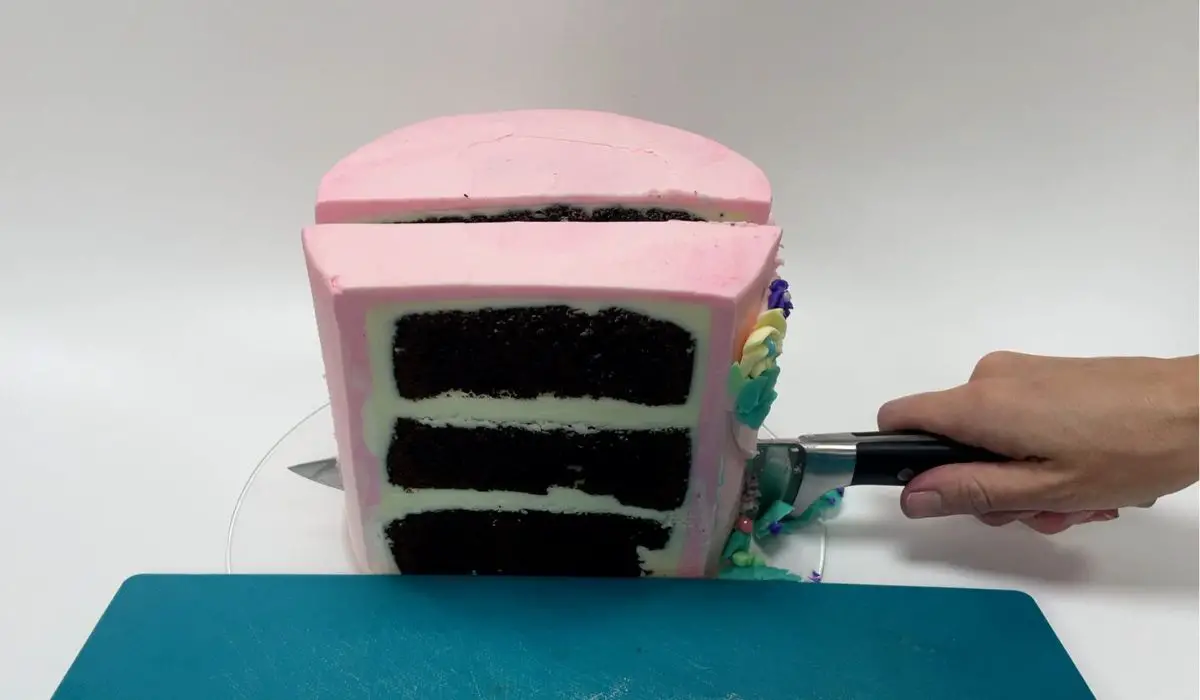
Step-by-Step Guide for Different Cake Shapes
Round Cakes
- Center Cut: Begin by making a small center cut to mark the starting point.
- Radial Slices: From the center cut, slice outward in radial lines, dividing the cake like spokes of a wheel.
- Even Portions: Continue slicing along the marked lines, ensuring uniform portions throughout the cake.
- Serve: Use a cake server to transfer slices onto plates, maintaining the cake’s structural integrity.
Square or Rectangular Cakes
- Straight Cuts: Start by cutting parallel lines either horizontally or vertically, depending on the desired serving size.
- Equal Portions: Ensure the cuts are uniform in width, creating consistent square or rectangular slices.
- Serve: Use a spatula or cake server to lift the slices gently and transfer them onto plates, maintaining neat edges.
Tiered Cakes
- Top Tier: For tiered cakes, begin by carefully removing the top tier, setting it aside for later cutting or ceremonial purposes.
- Support Removal: Remove any support structures between tiers, if applicable, before cutting each tier separately.
- Individual Tiers: Apply the cutting technique suitable for the specific shape of each tier (round, square, etc.), following the steps mentioned earlier.
- Serve: Assemble the tiers on separate serving plates, ensuring each tier receives equal attention and precision in slicing and serving. Use appropriate tools for each tier to maintain the cake’s presentation.
Cake Cutting Guide PDF
Access the complete Cake Cutting Guide PDF here for a detailed resource covering techniques, tools, and etiquette for slicing cakes of different sizes and shapes. This guide provides step-by-step instructions to ensure equal portions and a flawless presentation.
Cake Cutting Guide for Weddings
Make your wedding cake moment unforgettable with our specialized guide tailored for weddings. Download the PDF here, print the templates, and follow the step-by-step instructions for a flawless cake slicing experience.
Free Printable Cake Cutting Guide
Download our free printable cake cutting guide template, offering visual aids and instructions to ensure perfect slices every time. This printable resource is ideal for hosts and caterers, assisting in precise cake servings at any event.
Party Cake Cutting Guide
Planning a lively celebration? Our party cake cutting guide provides expert advice and techniques for efficiently cutting cakes to accommodate varying guest counts, ensuring everyone gets their fair share.
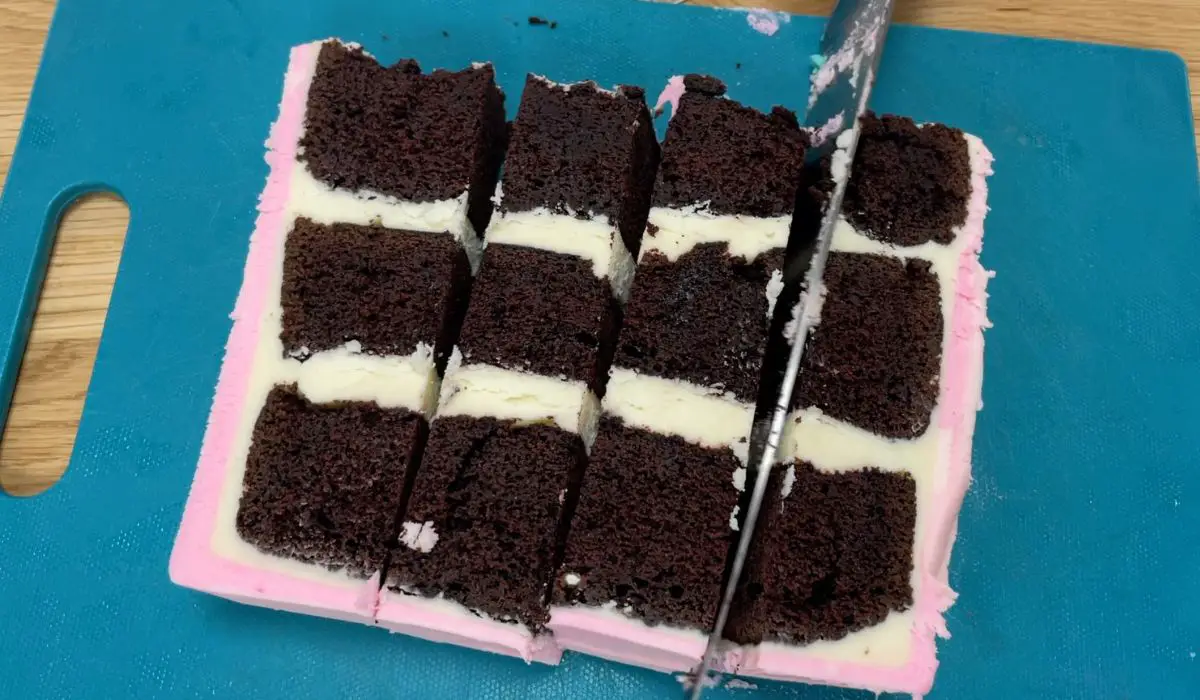
10″ Cake Cutting Guide
Find specific guidance for cutting a 10″ cake in our detailed guide, ensuring accurate and uniform slices. This guide caters to different cake sizes, maintaining consistency in portions regardless of the cake’s diameter.
Cake Cutting Guide Wilton
Explore the Wilton-inspired cake-cutting guide, incorporating renowned techniques and insights from baking experts. This guide, inspired by Wilton’s expertise, ensures professional and precise cake servings.
Advanced Cake Cutting Techniques
Mastering advanced cake-cutting techniques elevates the precision and presentation of your dessert servings. Techniques like radial slicing, used for round cakes, can be enhanced by employing a cake divider tool for perfectly even portions. Additionally, grid cutting, marking a precise grid pattern before slicing, ensures uniform servings from sheet cakes. These advanced methods cater to varying cake textures and sizes, maintaining structural integrity and presentation while accommodating larger gatherings.
Serrated Knife Technique
A serrated knife offers unique advantages in cake cutting. Its toothed edge grips the cake, allowing for smoother cuts through delicate or layered cakes without squishing or tearing. Using a gentle sawing motion with a serrated knife aids in maintaining the cake’s structure, especially when dealing with intricate designs or fillings. This technique requires a light touch and precision to achieve clean and smooth slices, enhancing the overall presentation of the cake.
Using Fishing Line for Clean Cuts
Utilizing fishing lines or unflavored, unwaxed dental floss presents an innovative method for achieving immaculate slices, particularly in layered or filled cakes. This technique involves sliding the line or floss gently through the cake, applying light pressure and pulling the ends to create clean, seamless cuts. The fishing line’s thinness allows for precise slicing without disturbing delicate layers or intricate designs, ensuring each slice retains its integrity. This method is especially useful for cakes with multiple layers or fillings, offering a unique way to achieve professional-quality cuts and a polished presentation.
Creating Patterns and Designs
Enhance the visual appeal of your cake by incorporating decorative cutting patterns. Techniques like creating spiral or swirl designs involve cutting the cake in a continuous circular or swirling motion, resulting in visually striking slices. Diagonal or crisscross patterns add an elegant touch, making the serving process an artistic display. These patterns are ideal for showcasing the cake’s interior layers or fillings, adding an extra element of creativity to your dessert presentation.
Using Templates for Intricate Designs
Templates offer precision when creating intricate designs while cutting cakes. From hearts and flowers to geometric shapes or customized designs, templates provide a guide for precise cuts. Place the template gently on the cake’s surface and use a sharp knife to follow the outline, ensuring clean and accurate cuts. This technique is perfect for themed events, allowing hosts to create visually appealing and thematic designs that elevate the cake’s presentation. Templates add a professional touch, enabling hosts or bakers to showcase their artistic skills in cake cutting, enhancing the overall aesthetic of the dessert.
Understanding Cake Cutting Basics
Cake cutting isn’t just about slicing; it’s about creating an experience. It’s crucial to grasp the significance of proper cutting methods, as it ensures fairness and a touch of finesse to any event.
“A perfectly sliced cake is a canvas waiting to be admired.” – Gourmet Martha
Popular Cake Cutting Methods
- Radial Slicing: Start from the center and slice outward for equal portions.
- Grid Cutting: Score the cake in a grid pattern before slicing for uniform servings.
Utilizing Special Techniques
When dealing with unique cakes like the Carrot Cake Roll or Vintage Heart Cakes, specific techniques cater to their distinct textures and shapes.
“Each cake demands its own cutting finesse.” – Gourmet Martha
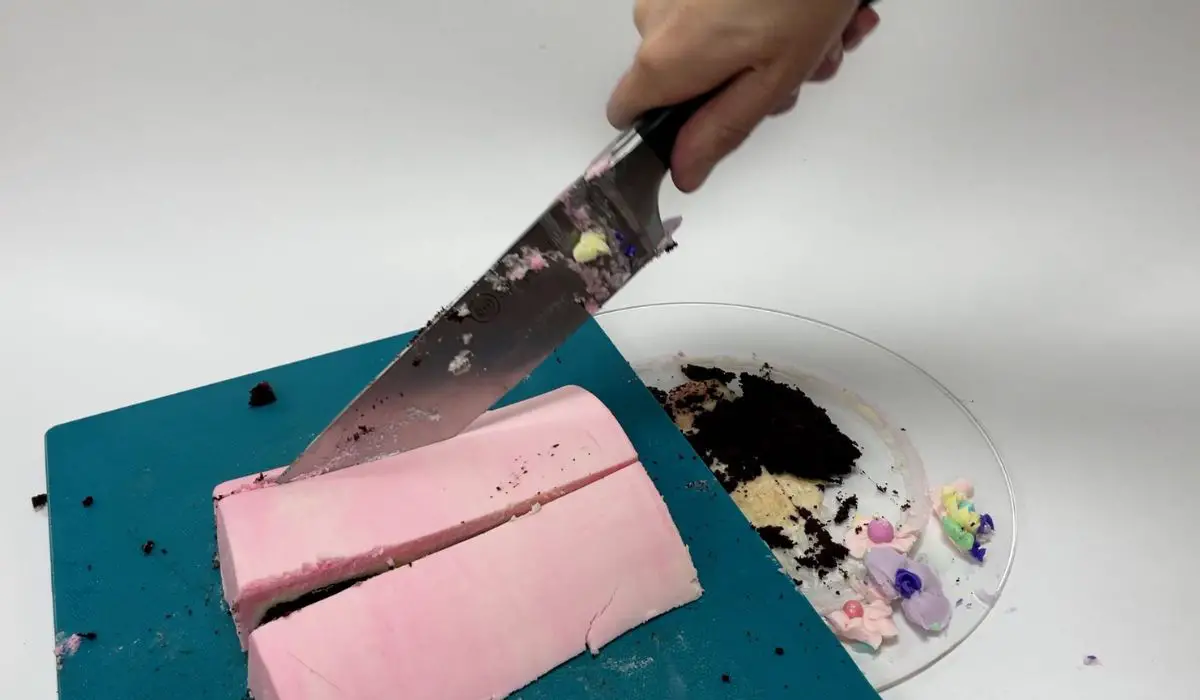
Advanced Tips for Perfect Slices
Creative Designs and Patterns
Experimenting with designs enhances the cake’s appeal. Try incorporating patterns like spirals or diagonal cuts to showcase the cake’s interior layers.
Expert Insights for Ice Cream Cakes
For delicate Ice Cream Cakes, using a warm knife prevents melting while ensuring clean cuts.
A Culinary Masterpiece Awaits
Mastering the art of cake cutting transforms a simple dessert into a work of art. Explore our recipes like the No-Bake Classic Woolworth Cheesecake or the Moist Chocolate Cake Stuffed with Strawberries and Condensed Milk to pair your perfect slices with delectable flavors.
At Gourmet Martha, we celebrate the artistry of cooking. Explore our recipes, sharpen your culinary skills, and transform every meal into a gourmet experience. Happy slicing and savoring!
Handling Unique Cake Ingredients
Fruit Cakes
When cutting fruit cakes containing dense ingredients like dried fruits and nuts, use a sharp knife cleaned between cuts to prevent sticking and ensure clean slices. For larger fruits like cherries or pineapple chunks, consider halving them before slicing for easier serving. Additionally, for cakes with a moist texture due to fruit infusion, a warm knife aids in achieving cleaner cuts, maintaining the cake’s integrity and presentation.
Ice Cream Cakes
Ice cream cakes require special handling due to their frozen nature. Use a sharp knife warmed under hot water for easier and cleaner cutting through the frozen layers. Wipe the knife clean and warm it again between cuts to prevent ice crystals from forming, resulting in smoother and neater slices. Working quickly but cautiously helps maintain the cake’s shape and prevents melting. Consider using dental floss for cutting through soft ice cream layers to achieve precise portions without smudging or deforming the cake.
Cake Cutting Mistakes to Avoid
Cake Cutting Mistakes
Avoid common cake cutting pitfalls like using a dull knife, resulting in messy and uneven slices. Cutting cakes straight from the fridge may cause crumbing due to the cold temperature. Rushing the cutting process can lead to jagged edges or distorted shapes. Additionally, inconsistent portion sizes and improper tools may hinder the presentation and experience.

To preserve leftover cake, cover it tightly with plastic wrap or place it in an airtight container. For unfrosted cakes, store at room temperature for 1-2 days, or refrigerate for 3-4 days. Frosted or filled cakes should be refrigerated for up to a week. Alternatively, wrap individual slices in plastic wrap and freeze for up to 3 months, ensuring they’re well-sealed to prevent freezer burn.
Tips for Perfect Cake Slices
1. Sharp Tools:
Use a sharp, non-serrated knife or cake slicer for clean, precise cuts without squishing the cake layers or causing crumbs.
2. Warm Knife for Layered Cakes:
Dip the knife in hot water and wipe it dry before slicing layered cakes. This helps to achieve cleaner cuts, especially when dealing with fillings or frostings between layers.
3. Chilled Cheesecakes or Creamy Cakes:
For cheesecakes or creamy cakes, use a knife warmed under hot water and cleaned between each slice to maintain clean edges.
4. Floss Technique for Layered Cakes:
Dental floss or unflavored, unwaxed string works well for cutting through soft or filled layered cakes. Slide it gently through the cake, pulling the ends to create clean slices.
5. Mark Portions:
Use toothpicks or cake dividers to mark where you’ll cut before making the first slice. This ensures evenly sized portions.
6. Clean Cuts:
Wipe the knife clean after each cut to prevent smudging the cake and to maintain presentation.
7. Patience and Precision:
Cut slowly and steadily, applying even pressure to maintain the cake’s shape and prevent crumbling.
8. Serve with Care:
Use a spatula or cake server to transfer slices onto plates delicately, ensuring they retain their form and presentation.
9. Chill for Easier Cutting:
Refrigerate the cake for a short while before cutting to make the process smoother, especially for softer or cream-filled cakes.
10. Adapt to Cake Texture:
Adjust cutting techniques based on the cake’s texture; delicate cakes may require gentler handling, while denser ones need sharper knives.
By incorporating these tips into your cake-cutting routine, you’ll ensure clean, even slices and enhance the overall presentation and enjoyment of the cake for everyone
FAQs (Frequently Asked Questions)
What is the etiquette for cutting cakes?
Cake cutting etiquette involves starting with the cake’s center and ensuring equal-sized portions. Use a clean knife and serve each slice neatly onto individual plates. Consider the event’s significance; for weddings or formal gatherings, the first slice might be reserved for the hosts or shared by the couple.
How do you cut a cake effectively?
For effective cake cutting, use a sharp knife and follow appropriate techniques based on the cake’s shape and type. For round cakes, start with a center cut and slice outward in radial lines. Maintain clean tools, apply even pressure, and consider using warm utensils for specific cake textures.
How many slices can you get from a round cake?
The number of slices from a round cake depends on its diameter and desired portion size. A standard 8-inch round cake can yield around 8 to 12 slices. Smaller or larger slices will alter the total number available.
Who normally cuts the cake at a wedding?
Traditionally, the couple jointly cuts the wedding cake, symbolizing their unity and the first task they perform together as a married pair. However, in some ceremonies, the couple might delegate this task to an honored family member or the catering staff while they assist in serving the cake to guests.
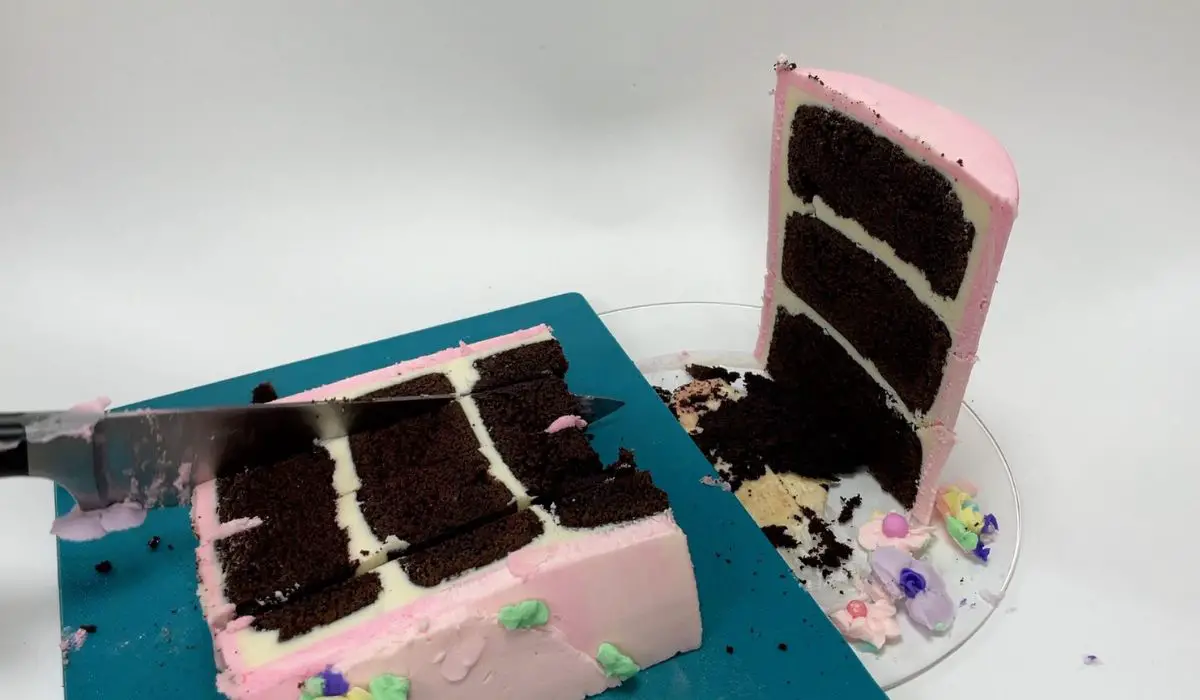
More FAQs
How do you cut a round cake into equal slices?
To cut a round cake evenly, start by making a small center cut. Then, slice outward in radial lines, like spokes of a wheel, ensuring each slice extends from the center to the edge. Continue cutting along these lines to achieve equal portions throughout the cake.
What is the best tool for cutting cakes?
A sharp, non-serrated knife or cake slicer is ideal for cutting most cakes cleanly and precisely. For specific types like cheesecakes, warm a knife under hot water for smoother cutting. Alternatively, cake servers with serrated edges work well for intricate designs or fondant-covered cakes.
How do you cut a tiered cake?
Start by carefully removing the top tier, setting it aside for later cutting or ceremonial purposes. Remove any support structures between tiers if present. Then, cut each tier separately using the appropriate technique for its shape, ensuring uniform portions before serving.
What’s the difference between cutting round and square cakes?
Round cakes are typically sliced radially from the center outward to create equal portions, resembling spokes of a wheel. Square or rectangular cakes are cut in straight, parallel lines, ensuring uniform slices with distinct edges.
Can you use dental floss to cut a cake?
Yes, dental floss or unflavored, unwaxed string can be used to cut through soft or filled layered cakes. Gently slide it through the cake, pulling the ends to create clean slices without squishing or damaging delicate layers.
How do you prevent a cake from crumbling while cutting?
Ensure your knife is sharp and clean for smooth cutting. For delicate cakes, use a warm knife. Refrigerating the cake briefly before cutting helps maintain its structure. Apply gentle, even pressure while slicing to prevent crumbling.
How thick should cake slices be cut?
The thickness of cake slices can vary based on preference and cake type. Standard slices are often around 1 to 2 inches thick. However, for layered or larger cakes, thinner slices of around 0.5 to 1 inch may be preferred to accommodate multiple servings. Adjust thickness based on the occasion and desired portion sizes.
Conclusion
Mastering cake-cutting techniques enhances any celebration. From using warm knives for delicate cakes to employing creative patterns, these techniques ensure a flawless presentation. Avoiding mistakes like using dull knives or rushing the process preserves the cake’s integrity. Whether it’s fruit cakes or ice cream cakes, each requires special handling. Remember, with precision and care, every slice becomes a masterpiece, ensuring everyone enjoys their portion of sweetness.

